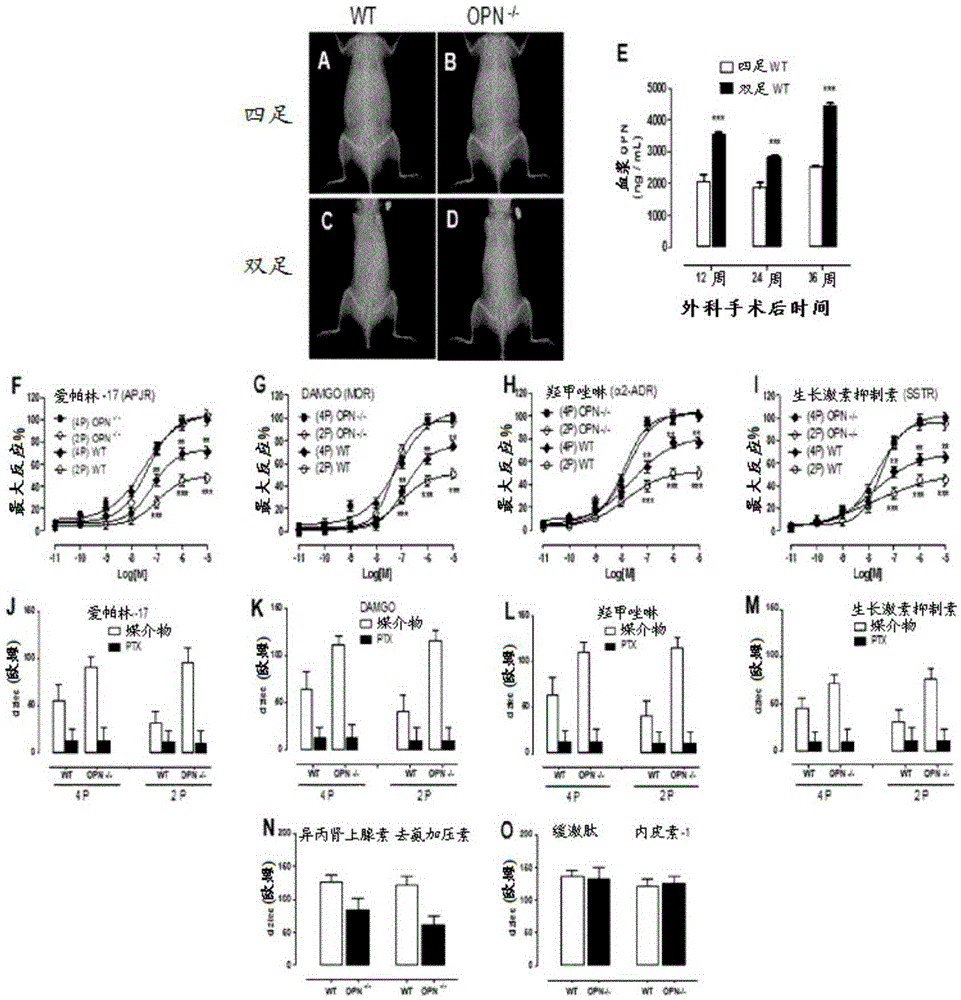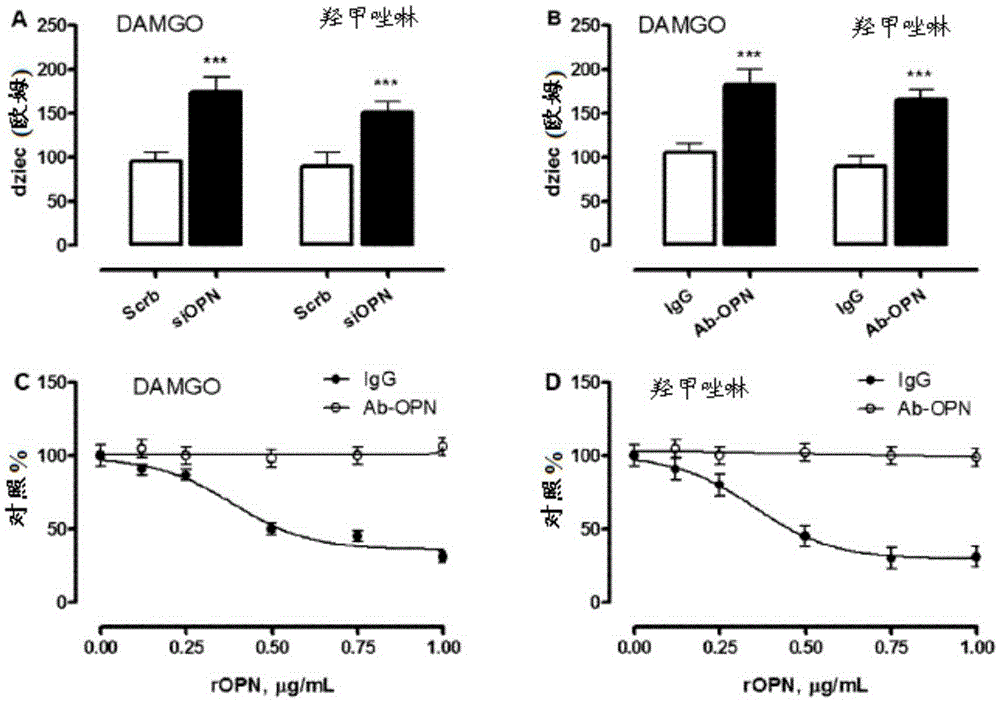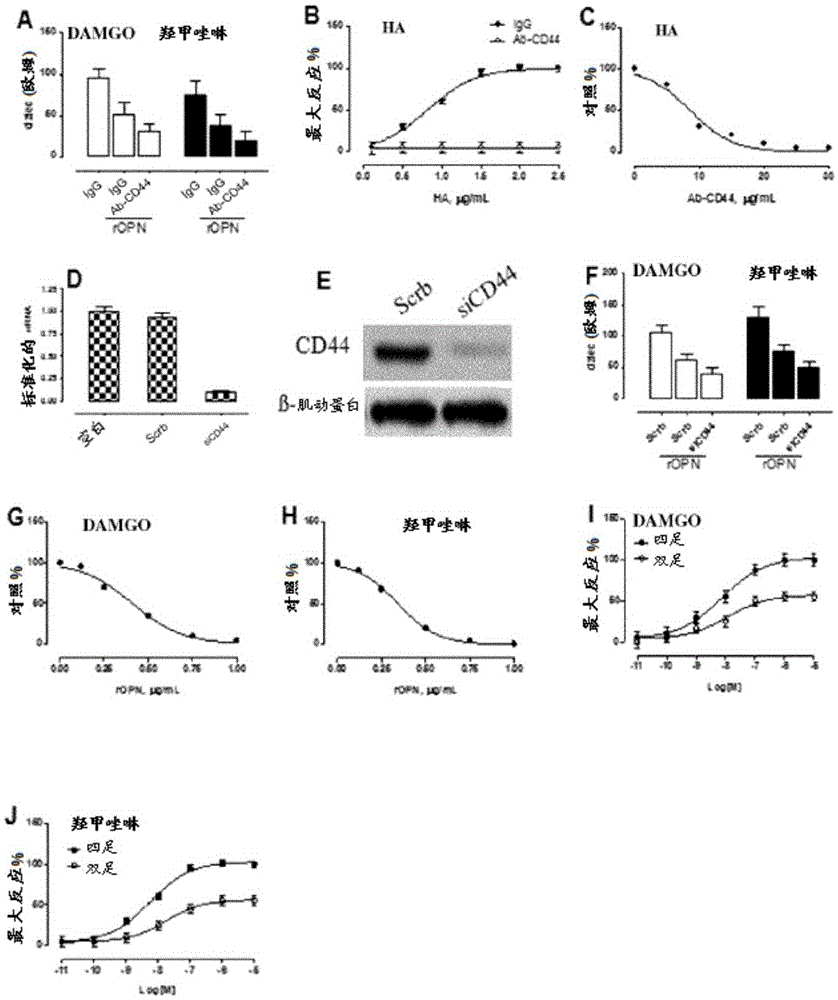A method of increasing GIPCR signalization in the cells of a scoliotic subject
A technology of signal transduction and scoliosis, applied in chemical instruments and methods, biochemical equipment and methods, medical preparations containing active ingredients, etc.
- Summary
- Abstract
- Description
- Claims
- Application Information
AI Technical Summary
Problems solved by technology
Method used
Image
Examples
Embodiment 1
[0151] Materials and methods
[0152] experimental animal model
[0153] The Review Committee for the Care and Handling of Animals Used in the Study (CHUSainte-Justine) has approved the protocol according to the guidelines of the Canadian Council of Animal Care.
[0154] Breeding pairs of C57Bl / 6j mice without OPN (OPN-deficient mice) or CD44 (CD44-deficient mice) were obtained from Dr. Susan Rittling (Rutger University, NJ, USA) and backcrossed over 10 generations in the C57Bl / 6j background To establish our own colony, and C57Bl / 6j mice were used as wild-type control mice (Charles-River, Wilmington, MA, USA). The C57Bl6 / 6j mouse strain was used because it is naturally deficient in melatonin (VonGall et al., 2000) and exhibits high circulating OPN levels (Aherrahrou et al., 2004). These mice develop scoliosis when they are maintained in the bipedal stage. (Machida et al., 2006). Bipedal surgery was performed after weaning (5 weeks postnatal) by amputation of the forelimb...
Embodiment 2
[0183] Genetic deletion of OPN protects bipedal C57Bl / 6 from scoliosis
[0184] The bipedal C57Bl / 6 mouse is widely used as an animal model to study the pathophysiological events leading to idiopathic scoliosis. These mice rapidly developed spinal deformities after 40 weeks of bipedal walking (Oyama et al., 2006). To determine whether OPN is involved in the development of idiopathic scoliosis, female wild-type (WT) and OPN knockout (OPN - / - ) C57B1 / 6 mice were amputated at 1 month of age forelimbs and tail and subjected to bipedal walking for 36 weeks to induce scoliosis. Representative radiographs of the spine taken at the end of the experimental period at figure 1 shown in A-1D. As expected, scoliosis was not observed in WT or OPN - / - develop in any of the four-legged mice. However, lateral curvature was evident in all bipedal WT mice. Curved convexity is pointing to either side, with no consistent bias. In contrast, analysis of radiographs did not yield bipedal OPN ...
Embodiment 3
[0187] OPN deficiency improves Gi protein-mediated receptor signaling
[0188] We next determined whether OPN deficiency could affect Gi protein-mediated signaling. For this purpose, will be from WT and OPN - / - Osteoblasts from mice were screened for their activation of opioid, somatostatin, α2-adrenoceptor and APJ receptors in response to DAMGO, somatostatin, oxymetazoline and apalene, respectively. These receptors are known to mediate signal transduction through the Gi protein. figure 1 The results shown in F-1I showed that all four compounds elicited - / - Concentration-dependent increase in response in mouse osteoblasts. However, in each case the magnitude of the response was within the OPN - / - greater in osteoblasts than in WT osteoblasts, suggesting that the activation of Gi proteins in OPN - / - promoted in osteoblasts. Furthermore, although response magnitudes were significantly higher in OPN from quadruped and biped - / - Osteoblasts in mice were similar, but signifi...
PUM
 Login to View More
Login to View More Abstract
Description
Claims
Application Information
 Login to View More
Login to View More - R&D
- Intellectual Property
- Life Sciences
- Materials
- Tech Scout
- Unparalleled Data Quality
- Higher Quality Content
- 60% Fewer Hallucinations
Browse by: Latest US Patents, China's latest patents, Technical Efficacy Thesaurus, Application Domain, Technology Topic, Popular Technical Reports.
© 2025 PatSnap. All rights reserved.Legal|Privacy policy|Modern Slavery Act Transparency Statement|Sitemap|About US| Contact US: help@patsnap.com



